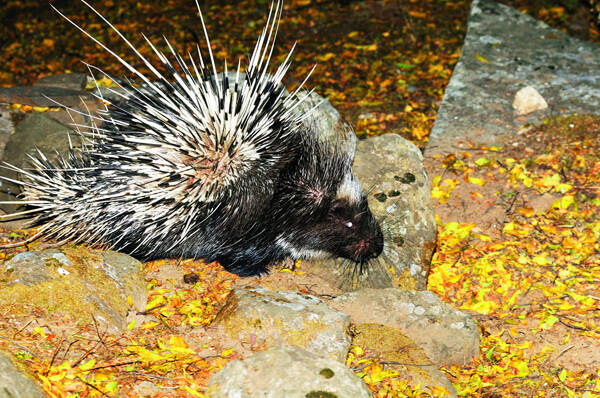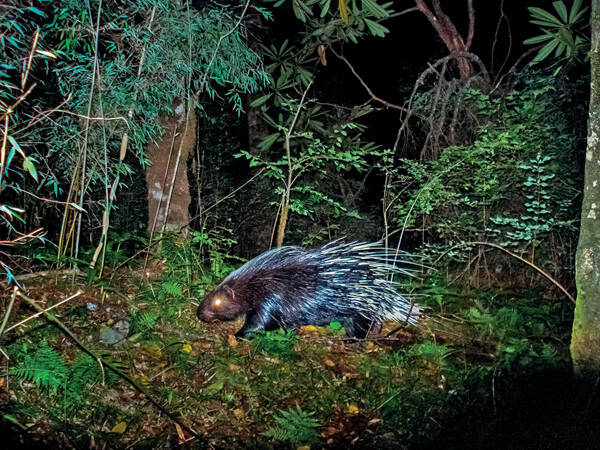Alex Gentry
IUCN
LCBasic Information
Scientific classification
- name:Alex Gentry
- Scientific Name:Alex Gentry,Porcupine, Chinese porcupine,Hystricomorpha,
- Outline:Rodents
- Family:Rodentia Porcupineidae Porcupine
Vital signs
- length:55-75cm
- Weight:20kg
- lifetime:
Feature
It is famous for its thorns. It has long and hard thorns on its back and tail, which are important organs for defending against natural enemies.
Distribution and Habitat
It is widely distributed in China, including Yunnan, Sichuan, Chongqing, Guizhou, Hunan, Guangxi, Guangdong, Fujian, Jiangxi, Anhui, Henan, Hubei, Jiangsu, Zhejiang, Anhui, Henan, Shaanxi, Gansu, Hainan, etc. Abroad, it is distributed in Nepal, India, Myanmar, Thailand, Malaysia, Indonesia, etc.
Appearance
The individual is relatively large. The weight can reach about 20kg. The body length is 550-750mm. The tail is relatively short, less than twice the length of the hind legs. The whole body is covered with spines. The base of the spines between the top of the head and the front of the back is light brown and the tip is white. There is a white stripe under the neck; the spines on the front of the back are square, and the spines on the back are long and round. The tail has special tubular spines. The tail makes a sound when it shakes.
Details
Porcupine is also called Chinese porcupine. There are 8 species in the genus Porcupine, which are widely distributed in Europe, Asia, and Africa, and only 2 species in China. Chinese porcupine was previously considered a subspecies of Malayan porcupine (<Hystrix brachyura>), and has only recently become an independent species. Porcupines mainly live in forests and forest shrubs. Although they are rodents, they are often hunted and eaten by people because of their large size, and the population in some places has seriously declined. Protection should be strengthened.

Porcupines are a type of rodent. They have a fat body, with long thorns from the shoulders to the tail. They are shaped like pigs, but they have thorns on their necks and backs. They are more than one foot long and very thick. The thorns are black and white, and the thickness varies. Porcupines are born with thorns, but the thorns are very soft at this time and will only harden after about 10 days. The curly-tailed tree porcupine in South America. This porcupine has a tangled tail that can wrap around branches. This makes it a good climber.
Porcupines are known for their spines, which are straight and curved backwards. They have thick, straight, black and black spindle-shaped spines on their backs, buttocks and tails. The hair on their bodies has evolved into protective spines, which appear in many mammals, and in rodents and even in the Porcupine suborder, but the spines of the Porcupine family are the most developed. The spines of the Porcupine family are easy to fall off, and some species can also shoot out the spines. The spines on the back of the porcupine's body are more developed than those on the front. The typical posture for resisting enemies is to turn the body back to the opponent.

Porcupines are widely distributed nocturnal animals that hide in caves to sleep during the day and come out to look for food at night. Porcupines in the world are roughly divided into two major categories, the Eastern and Western Hemispheres. Porcupines are distributed in the Yangtze River Basin and southwestern provinces of China.
The North American porcupine is about 1 meter long and looks clumsy. Its upper body is covered with hard spines, and the spines on its limbs and abdomen are short and soft, but it is a good climber. Its long hair is covered with 20,000 sharp spines, which are its secret weapon. The skull and mandible are both porcupine-type, with the masseter muscle passing through the large infraorbital foramen, the incisors and enamel layer are all multiseria, and there are 4 cheek teeth with ridged teeth.

Guinness World Records
Largest Porcupine: The North African crested porcupine was measured at about 90 centimeters long, not counting the tail. The black-and-white striped quills are coated with hard keratin and pointy spines; the longest of these quills is longer than the size of this book when opened. When threatened, the quills are erected.








